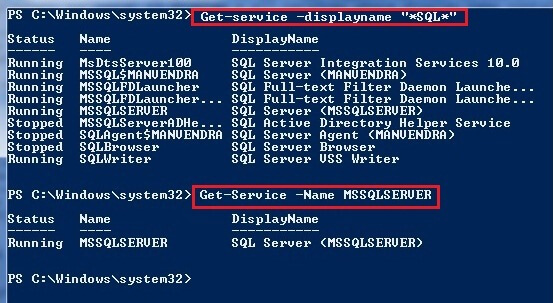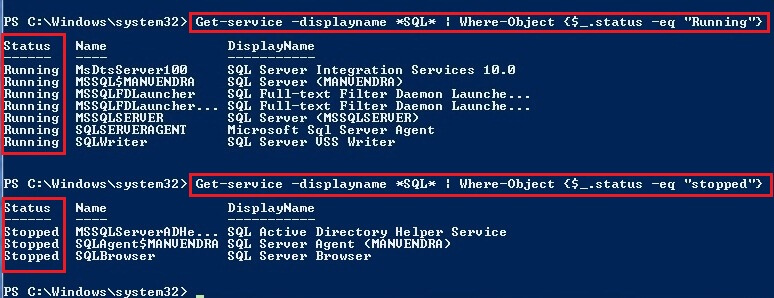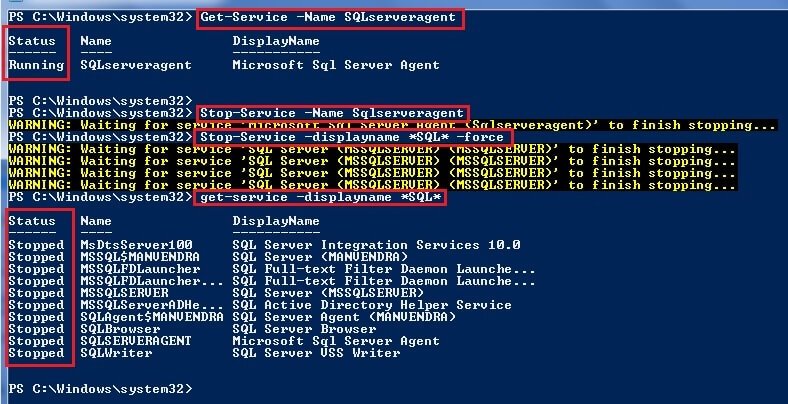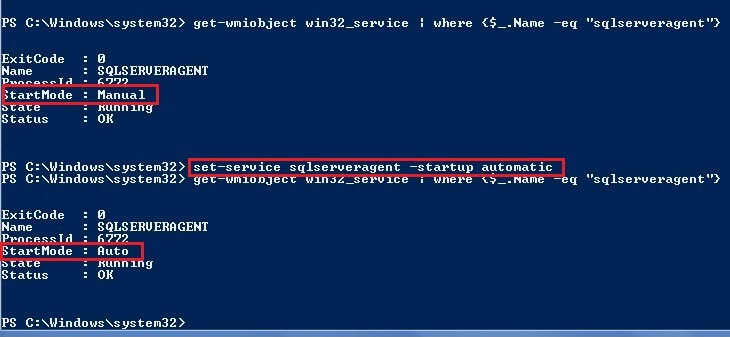Windows services are programs that run in the background to perform specific functions. Many services start when the Windows operating system is booted to perform their operation. We normally manage Windows services by using the service management console, which can be launched by selecting Start > Run > and typing services.msc. Once you press enter a service management console will appear with a list of services on your server. This is the place from where you generally manage Windows services.
NOTE:-Always run PowerShell prompt in "Run As Administrator" mode for administrative tasks.
Getting a List of Windows Services
Get-Service: We can use this cmdlet to lists all Windows services on your local system or remote system.
Filtering Windows or SQL Server services
We can apply filters as well to display a specific service. Suppose we want to see all services whose name begin with "SQL" or a specific service like MSSQLSERVER. We can use the -displayname parameter to display all services whose display name contains "SQL" And we will use -Name parameter to get a specific service like MSSQLSERVER.

We can also filter the output of these cmdlets. We can use another cmdlet where-object to filter any logs. Suppose we want to check all SQL server services which are in running state. We can add both cmdlets with the help of a pipe and filter as shown below. The output of the first cmdlet (before pipe) is saved in $ and we can use $ to access the output.

As we can see in the above screenshot, we can get all services which are in stopped state in the same way. I did not include a screenshot for the first set of code because the list was too large.
Starting and Stopping Services
To stop a service we use the Stop-Service cmdlet.
Suppose we want to stop one of the SQL Server services. First run get-service to list SQL services to check the status then stop it as shown below. If you want to shutdown all SQL Server services then we can also do this with the help of filters.

Sometimes a few services will fail to stop by normal Stop-service cmdlet with the below error.
This means one or more services are dependent on this service, so to avoid this issue either we can stop all dependent services or we can use the -FORCE parameter along with Stop-Service as shown in the above screenshot.
Stopping services could create an issue, so to be safe we can add a few parameters to get a confirmation screen about what we will be performing.
Here we will add two parameters. The first is -whatif and second is -confirm. If you use -whatif it will display a preview about what you are going to do and if you are use -confirm it will ask you again to choose Y for yes and N for no to proceed. The below screenshot shows how both parameters work.

To start a service we use the Start-Service cmdlet.
Starting a service is the same as stopping a service. Just use Start-Service in place of Stop-Service and run with all parameters which we have used above.
Below are a few cmdlets which start a service.
I am not attaching screenshots since this is very similar to the stop-service cmdlet which were shown in the above screenshots.
We can also restart a services with the help of PowerShell cmdlets.
Changing Configurations of Windows/SQL Server services
To change a configuration we can use Set-service.
This cmdlet will change the configuration of a service like startup types, display name, etc...
You can again check whether the configuration is changed or not. See the below screenshot of the outputs for the above cmdlets.

Below are few more cmdlets which can be used to alter the configuration of any service. You can change the display name of a service, you can change the description of a service or you can start or stop a service with the set-servicecmdlet.
Next Steps
- Try to use PowerShell cmdlets in your day to day activities. PowerShell is becoming more popular for SQL Server support on Windows core edition.
- Read more tips on PowerShell.
No comments:
Post a Comment